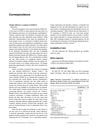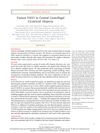Race, Ethnicity, and Comorbidities Are Critical Factors in the Diagnosis of Telogen Effluvium During the COVID-19 Pandemic
April 2021
in “
Journal of The American Academy of Dermatology
”

TLDR Hair loss (telogen effluvium) cases rose during the pandemic, especially in Hispanic and non-White groups, and were linked to other health issues and COVID-19.
The study "Race, ethnicity, and comorbidities are critical factors in the diagnosis of telogen effluvium during the COVID-19 pandemic" found that cases of telogen effluvium (TE), a common type of hair loss, increased nearly three-fold during the COVID-19 pandemic. The study analyzed 108 patients diagnosed with TE from March 1, 2020, to October 1, 2020, compared to 39 patients before the pandemic. It was found that the presence of comorbidities in conjunction with COVID-19 positivity may increase one's risk of developing TE. The study also found that the number of TE cases increased significantly in Hispanic and other non-White individuals during the pandemic, aligning with the disproportionate effect of COVID-19 on minority populations. However, there were only a few diagnoses of TE in Blacks, both before and during the pandemic, suggesting potential ethnic and racial disparities in hair loss disorders. The study concludes that further research is needed to confirm these associations and explore the development and diagnosis of TE in diverse populations.





